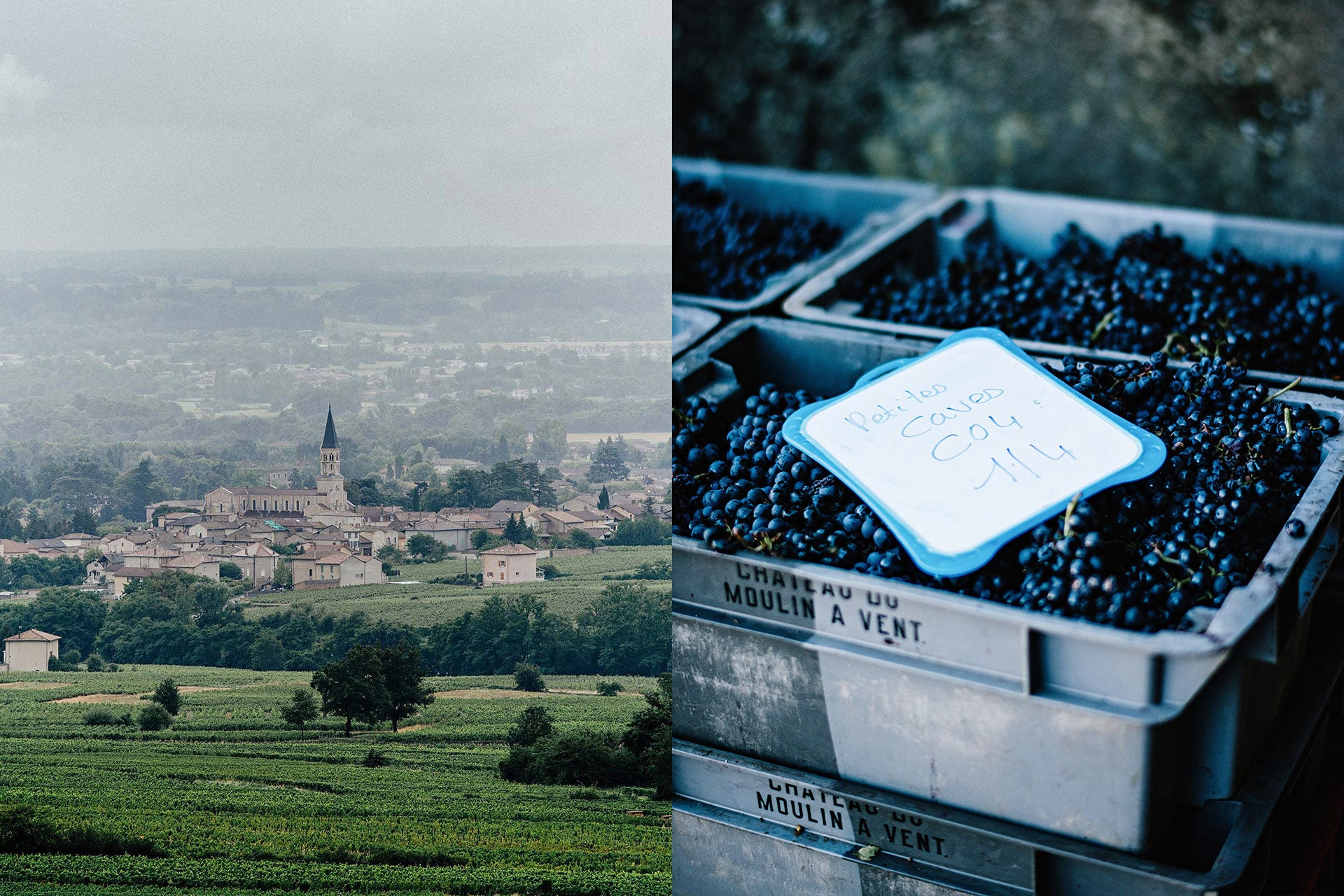In the 1980s, Beaujolais Nouveau made its first big splash in the United States, and American consumption skyrocketed. By the ’90s, the food-friendly wine was a dinnertime staple. That new vintages are released each year on France’s celebratory Beaujolais Nouveau Day, which just so happens to fall right before Thanksgiving, only adds to its stateside appeal.
In recent years, however, U.S. sales have sharply declined. In the aftermath of the pandemic, industry experts project a 25% drop in Beaujolais Nouveau sales in the U.S., according to a 2020 Euronews report.
So, how did Nouveau lose its zeal?
It has little to do with the wine itself. Cultural and sociological changes have changed the way people saw, drank and thought about Nouveau—and the entire Beaujolais region.
An Old History of New Wine
Among the rolling hills and tiny villages just south of Burgundy and north of Lyon, France, lies Beaujolais. The region is synonymous with Gamay, the area’s most-planted grape. A vibrant, fruit-forward wine, Beaujolais Nouveau is created through carbonic maceration, a method during which whole red grapes rest inside a tank with carbon dioxide, triggering fermentation to begin within the uncrushed grapes. The technique yields wines with a light, refreshing flavor profile.
Although the style was enjoyed for centuries in France, it didn’t gain widespread attention until 1951, when the Union Interprofessionnelle des Vins du Beaujolais gave the wine its name and a designated November release date. Only then are the wines, made from harvested grapes earlier in the year, to be released.

Soon thereafter, winemakers began to compete with one another via mass marketing campaigns, and Beaujolais Nouveau Day had its own slogan, “Le nouveau est arrivé.” By the 1980s, droves of wine drinkers across Europe, the U.S. and Asia were toasting glasses of Beaujolais Nouveau.
“When Beaujolais Nouveau was first introduced to the U.S. wine drinker, the public had an affinity for French wine and cuisine, and so there was an eager audience for something with such an incredible story and history behind it,” says Dennis Kreps, co-owner of Quintessential Wines, the U.S. importer of the world’s most famous Beaujolais Nouveau producer, Georges Duboeuf.
“But with all trends, there are ebbs and flows,” says Kreps. “In the ’90s and 2000s, the American palate shifted to domestic wines: bold Napa Cabs, spicy Zins and buttery Chardonnay. The popularity of imported wines dipped and with that, the demand for Beaujolais Nouveau.”
A Big Shift
The wine’s fame overseas was due largely to the late winemaker Georges Duboeuf, who launched his label in 1964. His Nouveau wines were approachable, easy-drinking and notably inexpensive. In its heyday, Georges Duboeuf Beaujolais Nouveau sold as many as 1.185 million nine-liter cases in U.S. stores, according to the academic society, the American Association of Wine Economists.
By 2019, however, sales had dwindled.
“It started in the 1980s,” says Pamela Wittmann, principal of Millissime PR & Marketing Services, which specializes in brand awareness for international wine companies. “Sales went up and up and up, and then there was an inflection point when things started going down.”

According to Wittmann, Nouveau became a victim of its own success in America. Sure, it was a great source of income and recognition for Beaujolais, but producers and distributors relied too heavily on the revenue from one specific style of wine.
“The reputation of the Beaujolais Nouveau took precedence over serious wines that were made in the region,” says Wittman. “I’m not just talking about just Cru Beaujolais, but also regular Beaujolais and Beaujolais-Villages.”
When interest in Nouveau started to wane, public esteem for other varieties of Beaujolais red, white and rosé wines fell. For most U.S. consumers, Beaujolais was synonymous with Nouveau. Once they lost interest in that wine, the entire region fell out of favor.
New Opportunities
In recent years, the region has amped up wine education, awareness and tourism to change its reputation.
“Producers became smarter and started saying, ‘We’re making this wine, but we’re also making other wines,’ ” says Wittman. “The region became a lot more open to tourists and letting people visit vintners, and showing them what else they do.”
Consumer esteem for Beaujolais Nouveau may have waned, but other wines from Beaujolais have surged. Exports of reds and rosés from the region spiked 22% in 2019.
“The Nouveau trend that took off earlier on was impressive to see,” says Rocco Lombardo, president of Wilson Daniels. “The wines were approachable, economical and only available for a finite time during the year, adding to their appeal. However, today’s consumers are more interested in wines of greater complexity that translate a sense of place.”

There’s increased consumer savvy about French wine and regions, too.
“Consumers are beginning to understand that opening a bottle of Cru Beaujolais from a producer like Château du Moulin-à-Vent, who is focused on single-vineyard, terroir-driven expressions, is a way to truly experience Burgundy without the hefty Burgundy price tag,” says Lombardo.
Interest in Cru Beaujolais, Beaujolais-Villages and other wines from the region could pave the way for a Nouveau comeback, says Kreps. So could ever-changing consumer trends.
“Now, the American wine drinker has a different taste,” says Kreps. “Lighter, fresher styles like Pinot Noir, and high-acidity, food-friendly wines are what consumers are gravitating toward. It’s because of this that Beaujolais Nouveau is again rising in its popularity.”
La future est arrivée.
Last Updated: May 8, 2023















